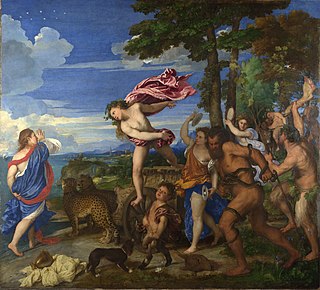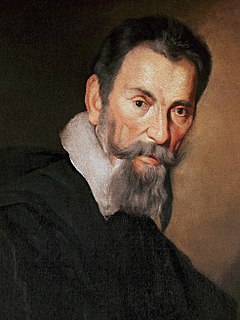| Performer(s) | First lines [6] | Notes |
|---|
| Orchestral ensemble | Toccata | Played three times |
| Prologue |
|---|
| La musica (Music) | Dal mio Parnasso amato a voi ne vegno
("From my beloved Parnassus I come to you") | A ritornello for strings plays at the beginning and ending of the prologue, and between its verses. |
| Act 1 |
|---|
| Pastore secondo (Second shepherd) | In questo lieto e fortunato giorno
("On this gay, happy day") | |
| Coro di ninfi e pastori (Chorus of Nymphs and Shepherds) | Viena, Imenco, deh, vieni
("Come, Hymen, o come") | |
| Ninfa (Nymph) | Muse, onor di Parnasso, amor del cielo
("Ye Muses, the honour of Parnassus, the love of Heaven") | |
| Coro di ninfi e pastori | Lasciate i monti, lasciate i fonti
("Leave the mountains, leave the fountains") | In two sections, with an instrumental ritornello after each section |
| Pastore primo (First shepherd) | Ma tu, gentil cantor, s'a tuoi lamenti
("But thou, gentle singer, whose laments of love...") | |
| Orfeo (Orpheus) | Rosa del ciel, vita del mondo
("Rose of the heavens, life of the earth") | |
| Euridice (Eurydice) | Io non diro qual sia neltuo gioir
("I cannot say how great my bliss is.") | Followed by a reprise of choruses:; "Lasciate i monti" and ritornello; "Vieni, Imeneo" and ritornello |
| Pastori primo, secondo, terzo e quarto, ninfa (First, second, third and fourth shepherds, and nymph) | Ma se il nostro gioir dal ciel deriva
("But if our rejoicing comes from Heaven") | With ritornelli |
| Coro di ninfi e pastori | Ecco Orfeo, cui pur dianzi
("Here is Orpheus, for whom sighs were food") | |
| Act 2 |
|---|
| Orchestra | Sinfonia | |
| Orfeo, pastori secondo e terzo | Ecco pur ch'a voi ritorno
("Behold I return to you") | Sections interspersed with ritornelli |
| Coro di ninfi e pastori | Dunque fa' degni, Orfeo
("Then, Orpheus, make worthy") | Followed by ritornello |
| Orfeo | Vi ricorda, o boschi ombrosi
("Do you remember, o shady woods") | Sections interspersed with ritornelli |
| Pastore secondo | Mira, deh mira, Orfeo, che d'ogni intorno
("Look, Orpheus, o lookhow on all sides...") | |
| La messaggera, Pastore primo, secondo e terzo, Orfeo | Ahi, caso acerbo, ahi, fato empio e crudele
("Ah, bitter happening, ah impious and cruel fate") | |
| La messaggera | In un fiorito prato
("In a flowery meadow") | |
| Pastori secondo e terzo | Ahi, caso acerbo, ahi, fato empio e crudele
("Ah, bitter happening, ah impious and cruel fate") | |
| Orfeo | Tu se' morta, mia vita, ed io respiro?
("Thou art dead, my love, and I am breathing?") | |
| Coro di ninfi e pastori | Ahi, caso acerbo, ahi, fato empio e crudele
("Ah, bitter happening, ah impious and cruel fate") | |
| La messaggera | Ma io, che in questo lingua
("But I, who with this tongue...") | |
| Orchestra | Sinfonia | |
| Pastore secondo e terzo | Chi ni consola, ahi lassi?
("Who shall console us unhappy ones?") | |
| Coro di ninfi e pastori | Ahi, caso acerbo, ahi, fato empio e crudele
("Ah, bitter happening, ah impious and cruel fate") | |
| Pastore secondo e terzo | Ma dove, ah dove or sono
("But where, o where is now...") | |
| Coro di ninfi e pastori | Ahi, caso acerbo, ahi, fato empio e crudele
("Ah, bitter happening, ah impious and cruel fate") | Act ends with ritornello (La musica) |
| Act 3 |
|---|
| Orchestra | Sinfonia (Underworld) | |
| Orfeo | Scorto da te, mio nume
("Escorted by thee, my Goddess") | |
| La speranza (Hope) | Ecco l'atra palude, ecco il nocchiero
("Here is the desolate swamp, here is the boatman") | |
| Orfeo | Dove, ah, dove ten'vai
("Wither, o wither dost thou go?") | |
| Caronte (Charon) | O tu ch'innanzi morte a queste rive
("O thou who darest before death...") | |
| Orchestra | Sinfonia (Underworld): reprise | |
| Orfeo | Possente spirto e formidabil nume
("Mighty spirit and powerful divinity") | With ritornelli |
| Caronte | Ben mi lusinga alquanto
("Much I am flattered") | |
| Orfeo | Ahi, sventurato amante
("Ah, unhappy lover that I am") | In two sections; the Underworld sinfonia plays at the end of each section |
| Coro di spiriti (Chorus of spirits) | Nulla impresa per uom si tenta invano
("Nothing is undertaken by man in vain") | Act concludes with further reprise of Underworld sinfonia. |
| Act 4 |
|---|
| Proserpina (Proserpine) | Signor, quell'infelice
("My lord, this unhappy one...") | |
| Plutone (Pluto) | Benché severo ed immutabil fato
("Although stern and immutable fate...") | |
| Spiriti primo e secondo (First and second spirits) | O de gli abitator del'ombre eterne
(2O mighty king of the eternal world of shadows") | |
| Proserpina, Plutone, spirito primo e coro di spiriti | Quali grazie ti rendo
("How shall I ever than thee...") | Followed by ritornello |
| Orfeo, spirito terzo (Third spirit) | Quale onor de te fia degno
("What honour is worthy of thee") | Interspersed with two ritornelli |
| Euridice, spirito primo | Ahi, vista troppo dolce e troppo amara
("Ah, sight too sweet and too bitter") | |
| Orfeo | Dove ten'vai mia vita?
("Whither goest thou, my life?") | Followed by Underworld sinfonia |
| Coro di spiriti | E la virtute un raggio di celeste bellezza
("Virtue is a ray of heavenly beauty") | Followed by Underworld sinfonia |
| Act 5 |
|---|
| Orfeo, Eco (Echo) | Questi i campi di Tracia, e quest'e il loca
("These are the fields of Thrace, and this is the place...") | Preceded by ritornello (La musica) |
| Orfeo | S'hai del mio mal pietade io ti ringrazio
("If thou has pity for me in my suffering, I thank thee") | Followed by ritornello |
| Apollo, Orfeo | Perchè a lo sdegno ed al dolor in preda
("Why dost thou give thyself up as prey...") | Followed by ritonello |
| Coro di pastori | Vanne Orfeo, felice appieno
("Go, Orpheus, completely happy") | Followed by ritornello |
| Orchestra | Moresca (Moorish dance) | End of opera |
| End of opera |
|---|
| |
| Original version of act 5, per 1607 libretto |
|---|
| Orfeo, Eco (Echo) | Questi i campi di Tracia, e quest'e il loca
("These are the fields of Thrace, nd this is the place...") | Preceded by ritornello (La musica) |
| Orfeo | S'hai del mio mal pietade io ti ringrazio
("If thou has pity for me in my suffering, I thank thee") | Followed by ritornello |
| Coto di Baccanti (Chorus of Bacchantes) | Evohe padre Lieo, Bassareo
("Hail, Father Lyaeus, Bacchus!") | |
| Due Baccanti | Fuggito è pur da questa destra ultrice
("Flown from this avenging arm...") | |
| Coro di Baccanti, due Baccanti | Evohe padre Lieo, Bassareo
("Hail, Father Lyaeus, Bacchus!") | Chorus repeated three times after soloist passages |









